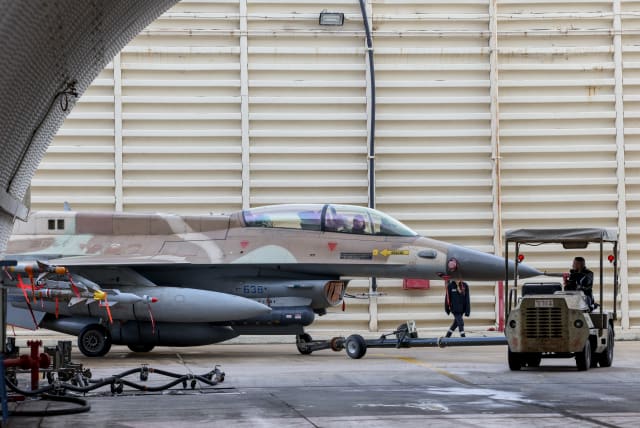Hezbollah's attack toward Ramat David airbase marks latest in history of threats to base

Hezbollah targeted the IDF base at Ramat David with rocket attacks, emphasizing its historical significance and previous threats against the base.
The intense barrage of rockets fired on Sunday morning from Lebanon had a single target: the IDF base at Ramat David.
For many months, Hezbollah has threatened to strike the base, which it has designated as a primary target, and even shared aerial footage taken by a drone that infiltrated the area.
However, attempts to attack the northern base did not begin on Sunday morning. For decades, the runways and aircraft hangars at the air force base were a central target for enemies beyond Israel's borders.
The British Air Force base at Ramat David was built in 1941, after replacing a rehabilitation institution for juvenile delinquents that operated there from 1938, Israeli media noted, which replaced an agricultural research station founded in 1925.
The first pilot to land in the cornfield at the heart of the valley, a military airfield, was Roald Dahl, who later became a famous author (James and the Giant Peach, Charlie and the Chocolate Factory, and more).
On June 10, 1941, the British airfield, which was then operational in Haifa, was attacked, forcing British army officials to search for an alternative landing site. Dahl identified a suitable location and later wrote about the landing in his book Going Solo, which was supposed to be a secret place at the time.
History of attacks and resilience
The Ramat David base was attacked by Arab armies for the first time shortly after Israel declared independence, and on May 22, 1948, Egyptian Spitfire pilots attacked the airbase, killing four British soldiers. The Egyptians claimed their pilots were confused and mistakenly thought they hit the Megiddo airfield. At the same time, it is believed they thought the Ramat David airfield had fallen into Israeli hands and were surprised to find that the British had not yet evacuated it.
During the Yom Kippur War, the Syrians managed to hit the base, killing a pilot, wounding several other soldiers, and causing damage. From the first day of that war, pilots from Ramat David Airbase operated around the clock. On the second day of the way, a Saturday night, the base was attacked, and multiple explosions occurred near the base. After a while, it became clear that Soviet-made FROG missiles fired from Syria exploded near the base.
"Planes would land at Ramat David for repairs, and the mechanics worked all night in the exposed hangars without protection. Their hands were shaking. Their commanders worked with them all night, and by morning, there wasn't a single plane that wasn't repaired," retired Brigadier General Eric Azuz shared. Azuz was an air squadron commander at Ramat David Airbase during the war.
On the fourth day of the war, at 3:30 a.m., two missiles struck the base. One missile exploded at the residential area of the base, killing a 26-year-old pilot with a two-month-old newborn. The second missile exploded near the soldiers' quarters, wounding several soldiers and two pilots.
During the Second Lebanon War, Hezbollah also tried to target the Ramat David airbase and fired rockets at it. However, they failed in their attempts.
Jerusalem Post Store
`; document.getElementById("linkPremium").innerHTML = cont; var divWithLink = document.getElementById("premium-link"); if (divWithLink !== null && divWithLink !== 'undefined') { divWithLink.style.border = "solid 1px #cb0f3e"; divWithLink.style.textAlign = "center"; divWithLink.style.marginBottom = "15px"; divWithLink.style.marginTop = "15px"; divWithLink.style.width = "100%"; divWithLink.style.backgroundColor = "#122952"; divWithLink.style.color = "#ffffff"; divWithLink.style.lineHeight = "1.5"; } } (function (v, i) { });

